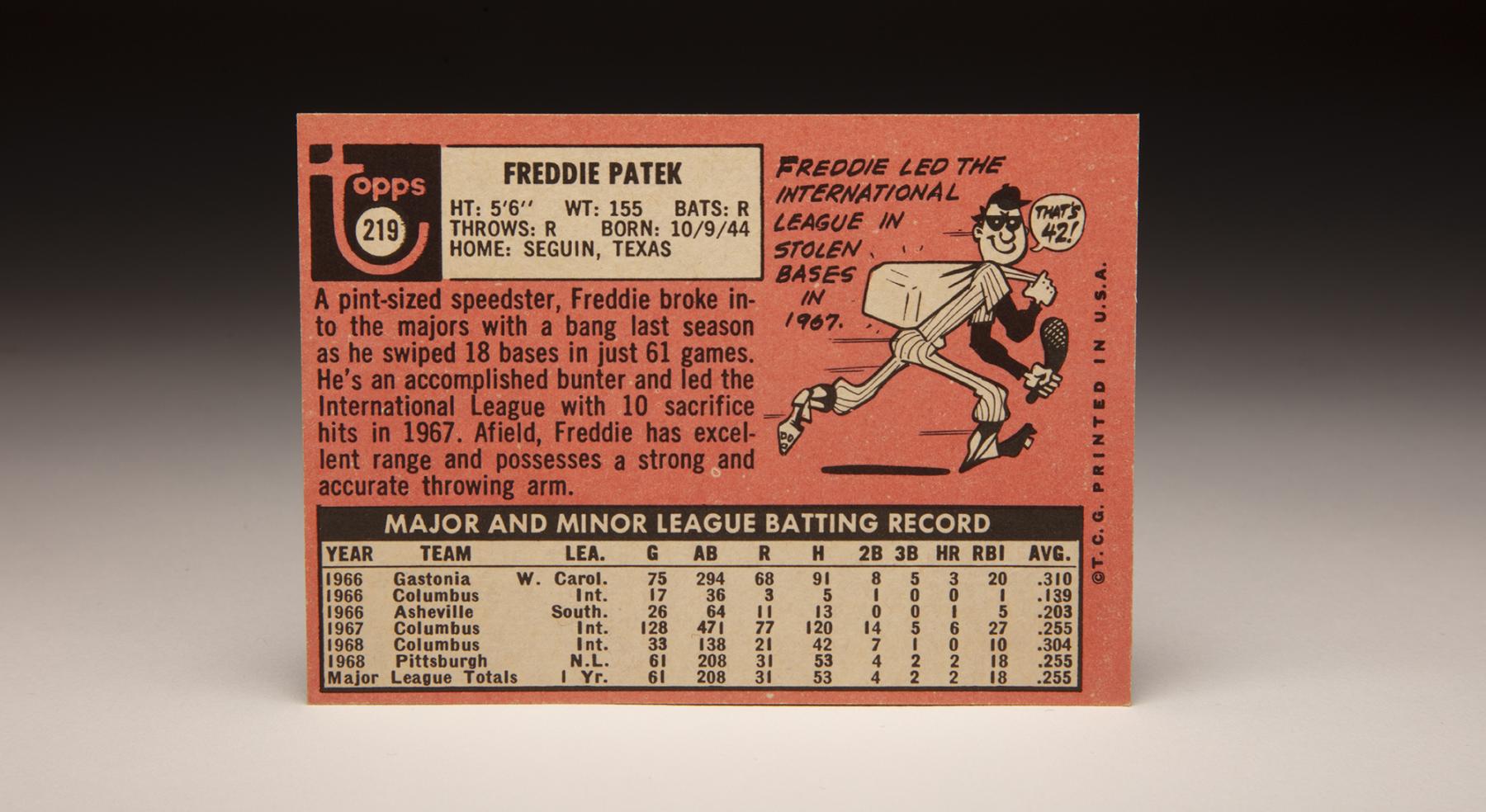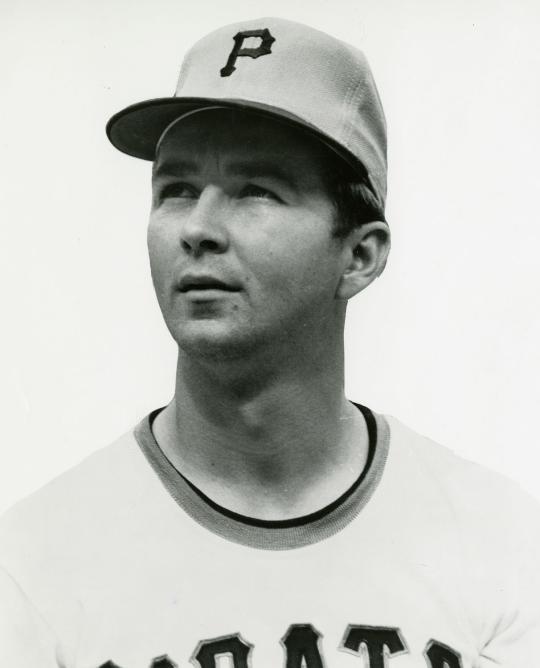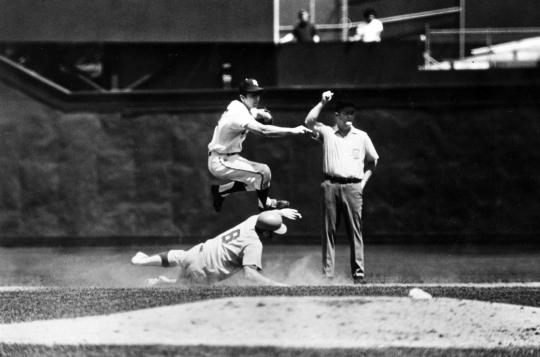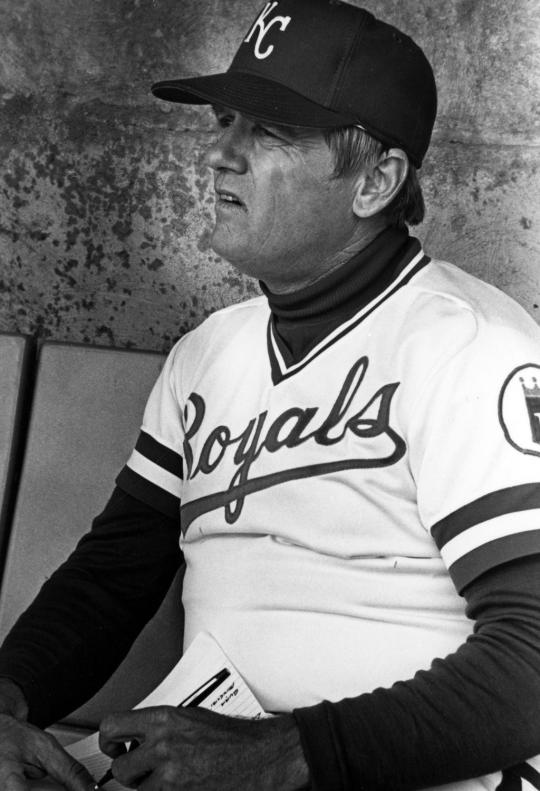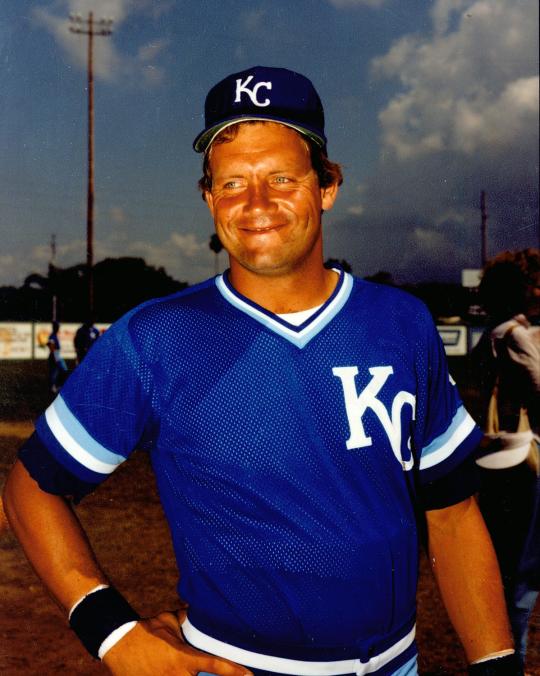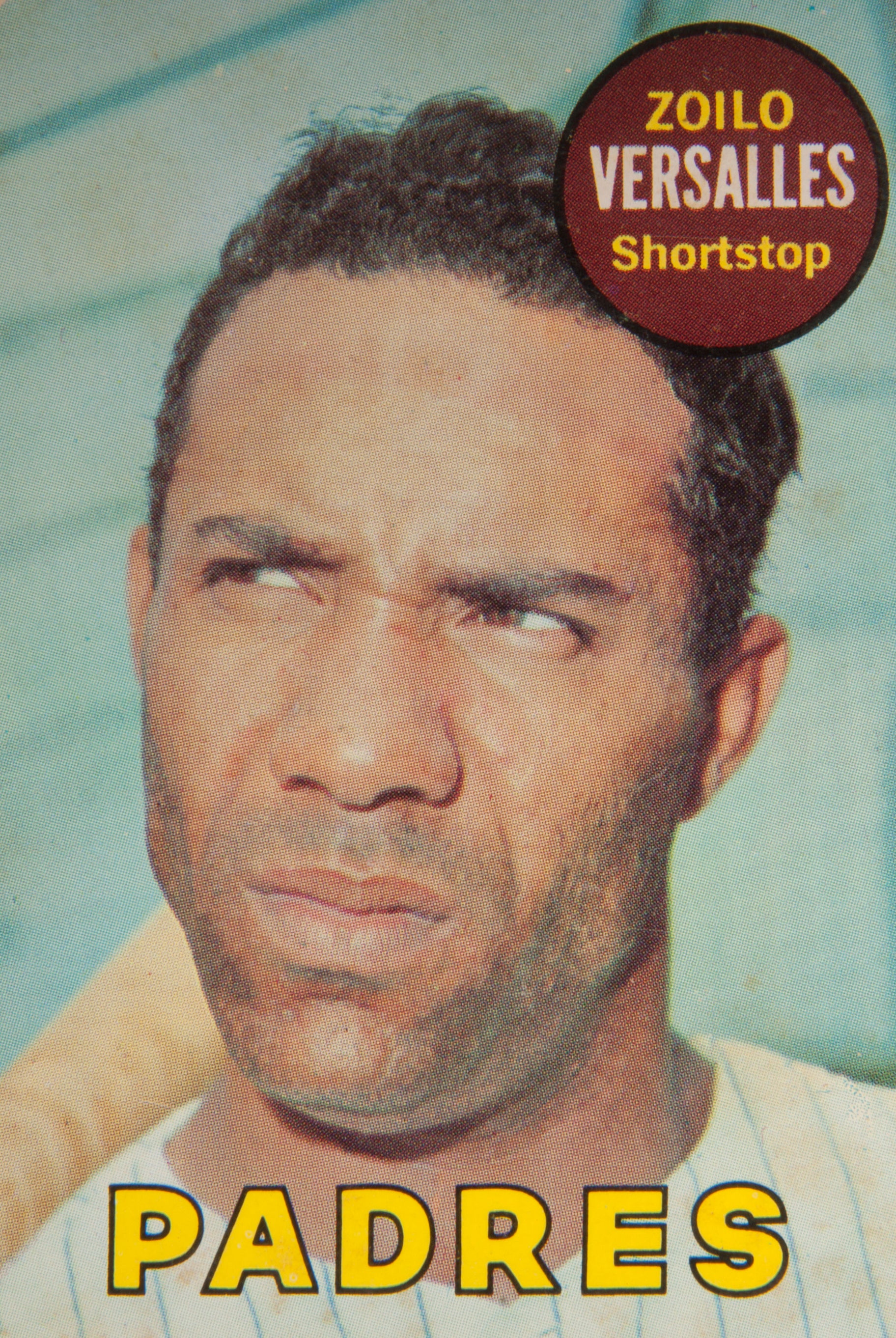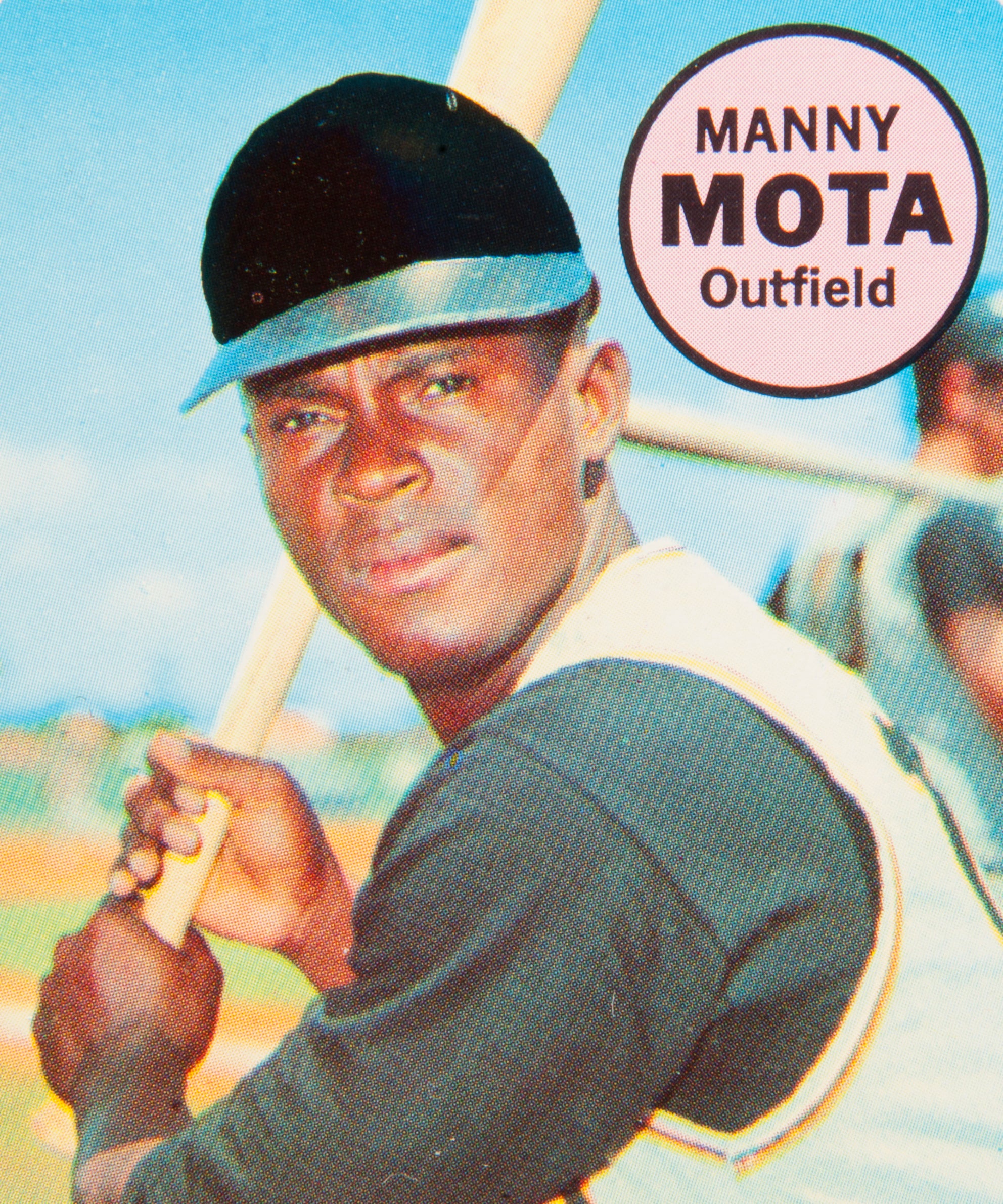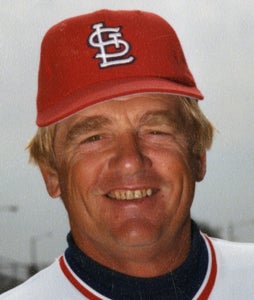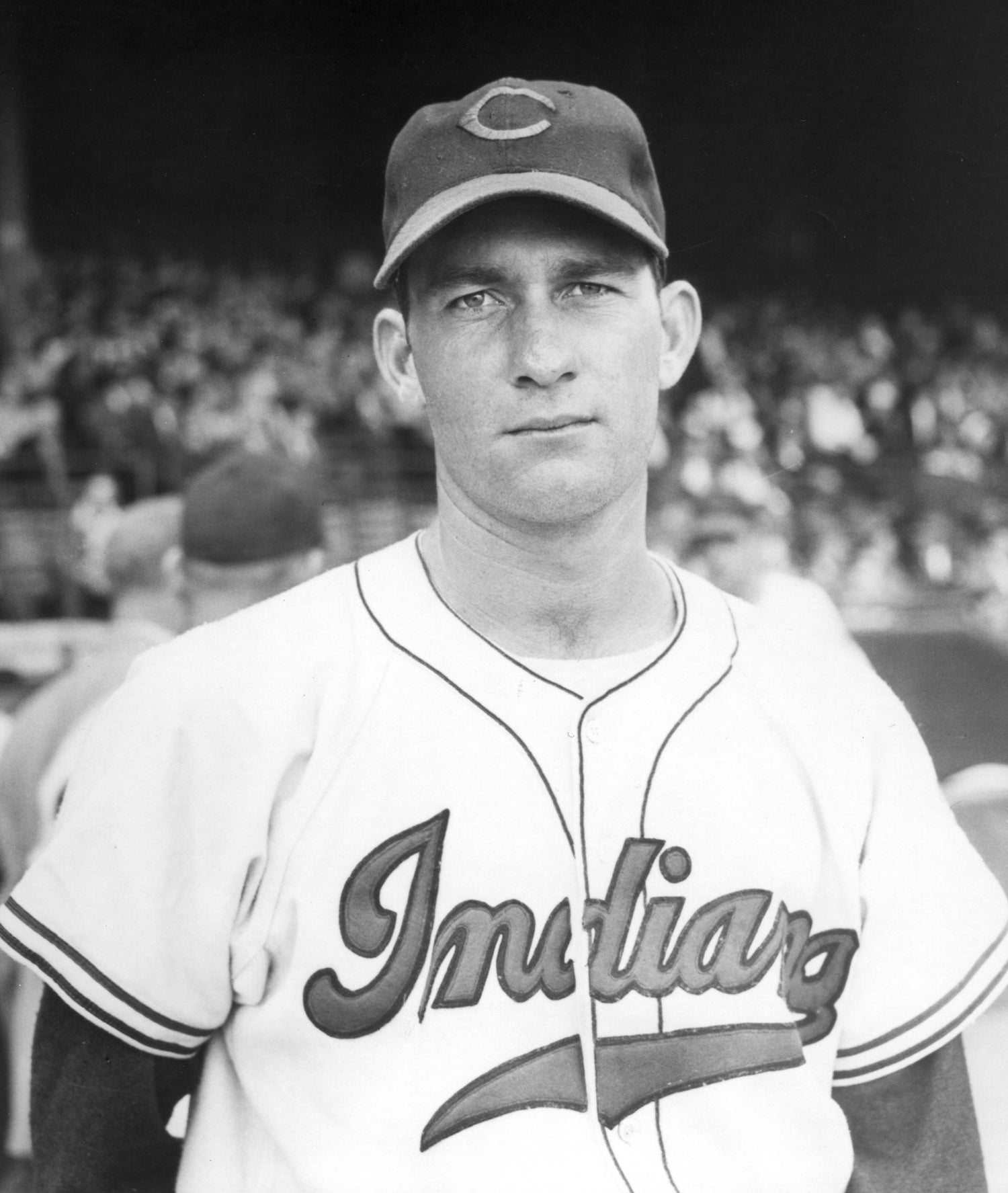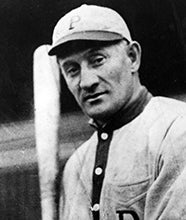- Home
- Our Stories
- #CardCorner: 1969 Topps Freddie Patek
#CardCorner: 1969 Topps Freddie Patek
He left his mark on the diamond with a variety of unique records, ranging from stolen bases to defensive double plays and even home runs.
Listed at different times anywhere from 5-foot-4 to 5-foot-6, Freddie Patek fought for every minute of his 14 years in the big leagues. And for Kansas City Royals fans of the 1970s, Patek remains one of the heroes of a team that drafted the blueprint for expansion success.
Born Oct. 9, 1944 in Oklahoma City, Patek was raised in Seguin, Texas. His mother and father were both softball players, and Patek starred on the baseball field while working for the family’s butcher shop before graduating high school and being drafted into the Air Force. At Randolph Air Force Base in Universal City, Texas, Patek played for the camp baseball team and caught the eye of Pittsburgh Pirates scouts Larry De Haven and Bob Zuk.
The Pirates selected Patek in the 22nd round of the inaugural MLB Draft on June 8, 1965. Soon after, the Air Force granted Patek a hardship discharge so he could care for his ailing father.
“(The Pirates) didn’t offer me much of a bonus,” Patek told the Pittsburgh Post-Gazette in 1970. “I told them I wouldn’t sign and I went home. (But) my old Air Force sergeant told me that if I thought I was good enough, I should sign and get my foot in the door first.”
Official Hall of Fame Merchandise
Hall of Fame Members receive 10% off and FREE standard shipping on all Hall of Fame online store purchases.
The Pirates allowed Patek to tend to family matters for the rest of 1965 before bringing him to Spring Training the following year. Wearing a size 6 shoe and pants that often brushed the ground, Patek endured taunts from the opposition but impressed his teammates with his speed and heart. He began the 1966 campaign at Class A Gastonia of the Western Carolinas League, where he hit .310 with 38 steals and 68 runs scored in 75 games.
He was promoted to Double-A Asheville and finished the season at Triple-A Columbus, where he began the 1967 season. He led the International League with 42 steals while hitting .255, then was sent to the Florida Instructional League – a showcase for the game’s top prospects.
After hitting .304 with 18 steals in 38 games for Columbus in 1968, the Pirates brought Patek to Pittsburgh.
Freddie Patek left his mark on the game with a variety of milestones, such as becoming the second shortstop to hit three homers in a game and setting a record by leading the league in double plays for four straight years. (Topps baseball card photographed by Milo Stewart Jr./National Baseball Hall of Fame and Museum)
Patek debuted for the Pirates on June 3, 1968, and found himself in the starting lineup less than two weeks later when starting shortstop Gene Alley was injured. The Pirates won their next eight games and Patek was hitting .291 when he was hit by a pitch on the right wrist by the Dodgers’ Don Drysdale.
X-rays initially showed no damage, and Patek returned to the lineup a week later but found he was unable to properly grip the bat. Another x-ray revealed a hairline fracture, and Patek missed 33 games before returning in August and taking over at shortstop.
He finished the season hitting .255 with 18 steals and 31 runs scored in 61 games.
“He’s got the arm the legs and the heart,” former Pirates manager Danny Murtaugh told the Post-Dispatch prior to the 1969 season.
But Murtaugh was not the Pirates skipper in 1969. Larry Shepard managed the team until being dismissed late in the season – and Patek and Shepard clashed several times as Patek saw regular time at shortstop in place of Alley, who was nursing a chronic shoulder injury.
Patek finished the season with a .239 batting average over 147 games, striking out 86 times – tied for 28th in the league and the second-most among shortstops, one behind Houston’s Denis Menke – while stealing only 15 bases.
Still, Dodgers manager Walter Alston called Patek “the most underrated player in the National League.”
Murtaugh returned as Pirates manager for the 1970 season, and Patek rode the bench for much of April as Alley regained the starting shortstop job. Murtaugh experimented with different lineup combinations throughout the summer, but when rookie Dave Cash took over the second base job Patek was largely relegated to a bench role.
Patek finished the 1970 season with a .245 batting average and eight steals over 84 games, helping the Pirates win the National League East title. But on Dec. 2, 1970, the Pirates shipped Patek to the Royals along with Bruce Dal Canton and Jerry May in exchange for Jim Campanis, Jackie Hernández and Bob Johnson.
Hernández and Johnson would both play critical roles in the Pirates’ 1971 World Series victory. Patek, meanwhile, found a home in Kansas City.
“I think Gene Alley and I were a lot alike,” Patek told the Pittsburgh Press. “We both felt we were good enough to play, and it got to us when we weren’t in there.
“Because Kansas City traded for me, I knew from the start I was going to play, the first time I’ve ever been sure of that.”
Patek was the Royals’ starting shortstop on Opening Day in 1971, hit in 15 of 16 games during late April and early May and flashed the consistent defense that would become his trademark.
“Anyone who felt that Patek couldn’t play,” Pirates coach Bill Virdon said midway through the 1971 season, “was underrating the kid.”
Patek finished the season with a .267 batting average, 86 runs scored, an MLB-leading 11 triples and an AL-best 301 putouts at shortstop. His 49 steals ranked second only to teammate Amos Otis’ 52 and marked the first of eight straight seasons with 30 or more stolen bases.
Among post-1900 shortstops, only Hall of Famer Honus Wagner had more consecutive years with at least 30 steals.
“I could have stole 30 more,” Patek said following the season. “I was on second base a whole lot of times when Amos came up, and (Royals manager) Bob Lemon left it up to us. But Amos hit .300, and you don’t want to be running from scoring position when you’ve got a hitter like that up there.”
In just their third season of play, the Royals finished 85-76 and in second place in the AL West. Patek finished sixth in the AL Most Valuable Player Award voting.
“Our pitching and defense are so much better,” Lemon told the Associated Press during the 1971 season. “That little guy at shortstop does it all.”
Patek’s batting average dropped to .212 in 1972 – the last AL campaign without the designated hitter. But he still stole 33 bases and was stellar in the field, posting a defensive WAR of 3.2 and earning the first of three All-Star Game selections.
Only Mark Belanger and Bert Campaneris recorded better defensive WAR seasons among shortstops in the 1970s. Belanger won seven Gold Glove Awards during the decade and was largely responsible for Patek being shut out of the award during his career.
In 1973, the Royals moved into Royals Stadium, and Patek loved the new surroundings – leading the league’s shortstops in double plays for the third straight year while finishing second in assists (503) and third in putouts (242). The next season, Patek tied a record (which stills stands) by leading the league in double plays for the fourth season in a row.
Patek was 30 years old at the start of the 1975 season, and the Royals were stocking their roster with young stars like John Mayberry, Hal McRae, Al Cowens and Frank White – along with future Hall of Famer George Brett, who would play next to Patek at third base for a total of six seasons. The Royals did not come out of the gate quickly in 1975, however, and manager Jack McKeon was replaced by Whitey Herzog in July.
Over the season’s final two months, Herzog led the Royals to a 35-23 record – and fell in love with Patek.
“He’s as good on (artificial turf) as anyone I’ve ever seen,” Herzog told United Press International. “But he’s good anywhere, on the rug or any place else. He can play on the moon.”
In 1976, the Royals broke the Oakland Athletics’ five-year hold on the AL West, clinching the title on Oct. 1 when the A’s lost to the Angels. Patek hit .241 with 51 stolen bases that season and kept a promise by jumping into the Royals Stadium fountains – in uniform – with longtime second base partner Cookie Rojas the day after Kansas City clinched the division title.
In the ALCS vs. the Yankees, Patek hit .389 with four RBI, including a two-run double in Game 4 that gave the Royals the lead for good and forced a deciding Game 5. But Chris Chambliss ended the Royals’ season with a walk-off home run in the bottom of the ninth of the fifth game, sending the Yankees to the World Series.
With baseball’s salary structure thrown on its ear following an arbitrator’s declaration of free agency for Andy Messersmith and Dave McNally following the 1975 season, Patek cashed in – signing a three-year deal worth a reported $500,000 for the 1977-79 seasons. Patek set career-highs in games (154), doubles (26), RBI (60) and steals (53) in 1977, leading the AL in stolen bases and helping the Royals win 102 games and another AL West title.
“I always wanted to be in a World Series and it’s getting late for me,” Patek told United Press International before the ALCS rematch against the Yankees. “Our attitude this year is, just let’s do a little better.”
Patek once again hit .389 in the postseason, this time with four runs scored and five RBI. But once again, the Yankees prevailed in five games.
Patek was named to his third All-Star Game in 1978 but began to show signs of wear, playing in just 138 games while hitting .248 with 38 steals. With prospect U.L. Washington positioned as the Royals’ shortstop of the future, Patek maintained his regular role despite leading AL shortstops with 32 errors that season.
The Royals won their third straight division crown in 1978 and faced the Yankees again in the ALCS. This time, Patek had just one hit in 13 at-bats – a two-run home run in Game 2, the only contest of the series that the Royals won.
In 1979, a shoulder injury which first manifested itself the year before hampered Patek to the point where Herzog began playing Washington and youngster Todd Cruz at shortstop. The Royals endured a difficult season to finish at 85-77 and in second place in the AL West – a finish that cost Herzog his job.
“To win,” Herzog told the News-Press of Fort Myers, Fla., in the spring of 1979, “we need a healthy Freddie Patek.”
Patek hit .252 in 106 games in 1979 but found no shortage of suitors when his contract expired after the season. He quickly signed a three-year contract with the Angels worth a reported $525,000 on Dec. 5, 1979.
On June 20, 1980, Patek hit three home runs against the Red Sox in a 20-2 Angels win, becoming only the second shortstop – Ernie Banks did it twice – to hit three home runs in one game. It was a feat that would not be repeated until Barry Larkin of the Reds hit three in one game against the Astros in 1991.
But leg, neck and shoulder injuries slowed Patek for most of the second half of 1980 – and he finished the season batting .264 with 41 runs scored and seven steals in 86 games. Then in December of 1980, the Angels acquired All-Star shortstop Rick Burleson from the Red Sox, effectively turning the 36-year-old Patek into a bench player.
“Looking back now, I sold myself short,” Patek told the Los Angeles Times in 1981, referencing offers from other teams he received following the 1979 season. “I came here thinking I could play 150 games a season.
“If I were an old 36, I’d resign. But I’m a young 36 and I want to play every day.”
Patek appeared in just 27 games in the strike-shortened 1981 season, hitting .234. On April 5, 1982 – the day before Opening Day – the Angels, who has acquired shortstop Tim Foli from the Pirates in the offseason, released Patek.
“This is the first time I’ve missed an Opening Day in 15 years,” Patek told the Seguin (Texas) Gazette-Enterprise. “I could be called by another club, but it is highly unlikely. But I’ll be ready if it does.
“I still might be one of the game’s biggest fans.”
Patek would go on to broadcast games for NBC, the White Sox and the Rangers during the next few years before working in the restaurant business and then returning to the game as a coach. Deeply committed to his Christian faith, Patek overcame society’s height bias to appear in 1,650 big league games and totaled 1,340 hits and 385 steals.
“Mickey Mouse wears a Freddie Patek watch,” wrote legendary columnist Jim Murray in an example of some of the taunts Patek endured during his career.
Murray pointed out in the same column, however, Patek was a legitimate candidate for the American League’s Most Valuable Player Award.
“I really don’t mind the fun the fans and players have with me,” Patek told the St. Louis Post-Dispatch in 1969. “What if I am the smallest player in the major leagues, now or ever? That beats being the littlest guy in the minors.”
Craig Muder is the director of communications for the National Baseball Hall of Fame and Museum


